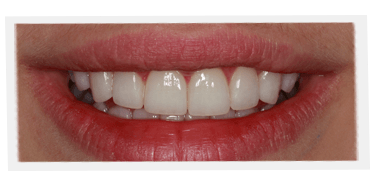
In Part 1, Part 2, Part 3, and Part 4, we covered an array of important principles that are used by cosmetic dentists when determining the right smile for your porcelain veneers, crowns, or dental implants. Now, we conclude the series by touching on Occlusion and Colouring. Enjoy! (Taken below from my book, A Guide to the Perfect Smile.)
#9 Occlusion
If you occlusion – your bite – isn’t right, it’s going to change the dynamics of how your smile, and you, look. Bite is important. Orthodontists have clearly shown that because your face is wider at your mid-part then at your chin, your upper teeth should umbrella your lower teeth. This is often not the case. Consider some of the potential disharmonies that we may inherit:
- The genes we get for our lower jaw may be different from the set of genes we get for our upper jaw.
- The genes we get for our teeth may be different from those we get for our jaws.
- The haws may not match each other. The teeth inside will therefore not be the right match for the jaws.
- When the lower jaw sticks out farther then the upper jaw, it sets the teeth on the opposite side, which we call a cross bite, and this looks prognathic (prominent). In the animal kingdom – alligators or dogs, for instance – the lower jaw is obviously bigger than the upper jaw. Fortunately, this is rare in humans.
- When the upper jaw sticks out farther than the lower jaw, the result is what we call buck teeth, which we consider architecturally unacceptable.
#10 Color
The ideal color of your teeth must be considered in relation to your skin tone. There is a view in dentistry that your teeth should be as white as the whites of your eyes, but this is a myth. There is no such thing as the right color. It is actually a subjective consideration. If you applied the zinc ointment that clowns use to your face, your teeth would instantly look brown. As soon as you washed the ointment off, they would look whiter.
Studies have been done in which thousands of teeth were analyzed by different dental practitioners who were compiling professional work on the anatomy of teeth. It is often though that darker people have whiter teeth, but once the teeth were on the table their racial origin could not be discerned.
Basically, your teeth need to be relatively lighter than your skin tone. Either get them whitened or wear more makeup or get a sun tan. We will examine various methods for lightening teeth in the following chapter.
At times, more than one principle can apply an area of teeth. Ensure that in fact the correction of one principle does not rigger the misalignment of another.



